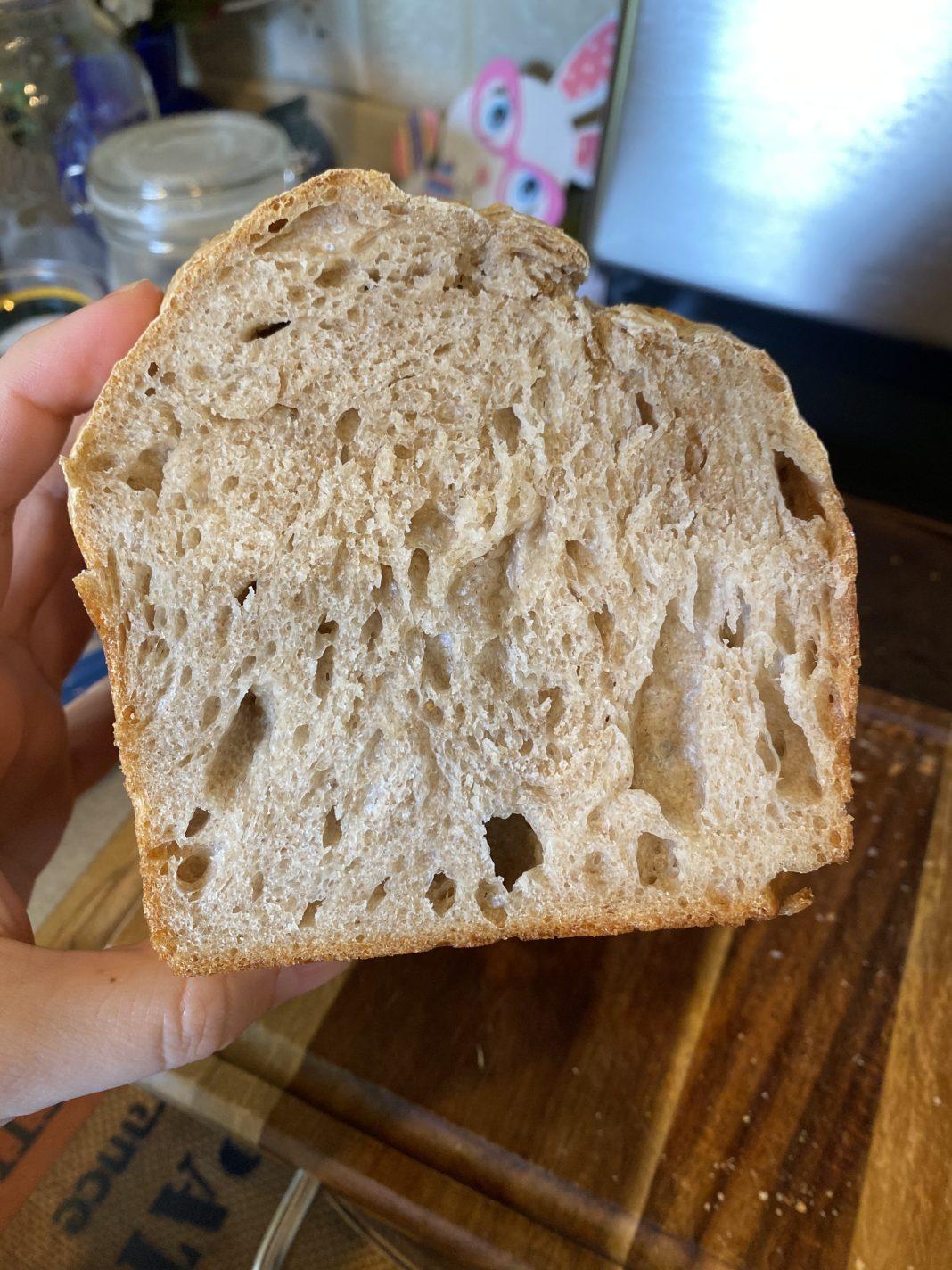At the start of the pandemic, sourdough bread was all the craze. I found myself in need of something to learn or do to distract myself from the stress of having a newborn baby, a rambunctious toddler, a husband suddenly working from our basement at the start of the unknowns of a global pandemic. And it was in those dark days of the start of the pandemic that my love for sourdough bread was born.
I guess I should not be surprised that baking bread became my thing. My mom made homemade bread and cinnamon rolls almost every week I was growing up. She still does! Waking up to a house that smelled like fresh bread was heaven. Her bread is famous among my friends and family – countless people have taken some of her starter in attempt to make her bread in their own homes. I’m convinced that people would agree to spend the night at our house just for the promise of bread and cinnamon rolls. I’m drooling just thinking about her cinnamon rolls. She even offered to bake my cousin bread every week if he agreed to go to college close to our house.
I first needed to make a sourdough starter. The options online are endless. You can buy already active starter or you can make your own. Sourdough starter is just cultivating the natural yeast in flour and it is not tricky to start, it just takes some patience. I decided I wanted the challenge of making starter from scratch, so I grabbed a new air tight container and got started. I used a recipe from The Little Spoon Farm to make my sourdough starter. But the basics of making a starter is just equal parts flour and water, rest, discard, start over on repeat until your starter doubles in size consistently.
Starter Recipe:
- 30 grams All Purpose flour
- 30 grams filtered water
Mix flour and water until it is smooth and let rest. 24 hours later, discard half of your mixture and again mix 30 grams of water and 30 grams of AP flour. You will want a food scale to measure your ingredients (you’ll want it for the bread as well) to ensure accuracy. You just repeat this over and over until your starter is bubbly and doubles in size after about 8 hours consistently. Your starter will look like this after it is properly fed:
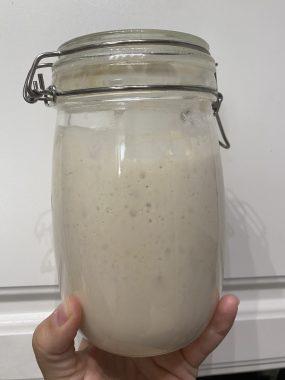
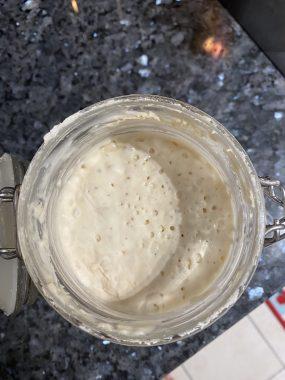
Once you have a viable starter, it is time to make bread.
Bread Recipe:
- 100 grams active sourdough starter*
- 15 grams of salt
- 385 grams of filtered water
- 400 grams of all purpose flour
- 120 grams of whole wheat flour
- Everything but the bagel seasoning (optional)
* Active starter is sourdough starter that has been fed, has risen and is starting to fall. You don’t want to use starter that has already fallen back to the size it was after the feeding because your resulting loaf will not rise much and will be dense. My starter is typically ready to use about 18 – 24 hours after I have fed it.
Night Before Baking:
- Using the food scale, place the starter and salt in a bowl.
- Add water and mix until the water is cloudy and the starter is dissolved into the water. There should be no lumps of starter in the resulting water.
- Add both flours to the liquid and mix together. The resulting dough will be stringy and will appear dry – this is how it should be, don’t worry! **
- Let dough rest for at least an hour.
- Kneed the dough using the stretch and fold method. As you do this, the dough will become more incorporated and less stringy. You will do this 4 times as you turn the bowl 1/4 of the way around after each stretch and fold. ***
- Let dough rise overnight.
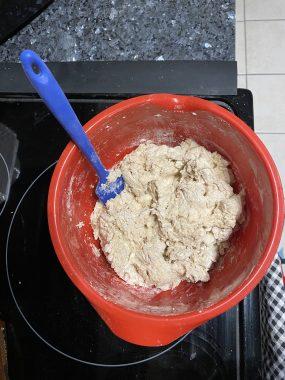

Morning of Baking:
- Preheat oven to 450 degrees F.
- Punch dough down and stretch and fold 4 more times, turning the bowl 1/4 of the way around after each.
- Butter a bread pan generously and add dough to the pan. The dough will be a little loose and may not hold shape when you transfer it from the mixing bowl – this is okay and it will cook just fine! You can always manipulate the dough in the bread pan into a loaf shape. Sourdough is traditionally baked in a dutch oven, but I like the bread pan shape for toast and sandwiches.
- Add everything but the bagel seasoning to the top of the bread until dough is covered evenly (or another seasoning if you’d like) or you can skip this step all together.
- Before you put the bread in the oven, you will need to score the top of it. I do this with a pairing knife and just make a deep cut from one corner to the opposite corner. You can also use a specialty tool to make fancier designs on the top of your bread. There are books specifically about scoring the top of your sourdough bread.
- Bake the bread at 450 degrees for 10 minutes and then lower the temperature to 400 degrees and bake for another 30 minutes.
- Take the bread out and serve warm.
- Store in an air tight container to maintain freshness.

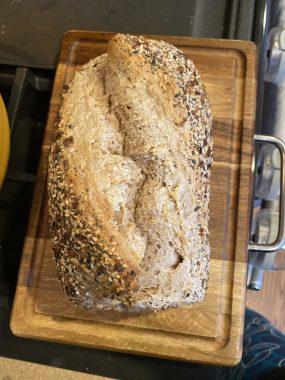
I hope you enjoy baking sourdough bread.
You also can use your starter in my recipes for pumpkin rolls and peppermint white chocolate rolls!







